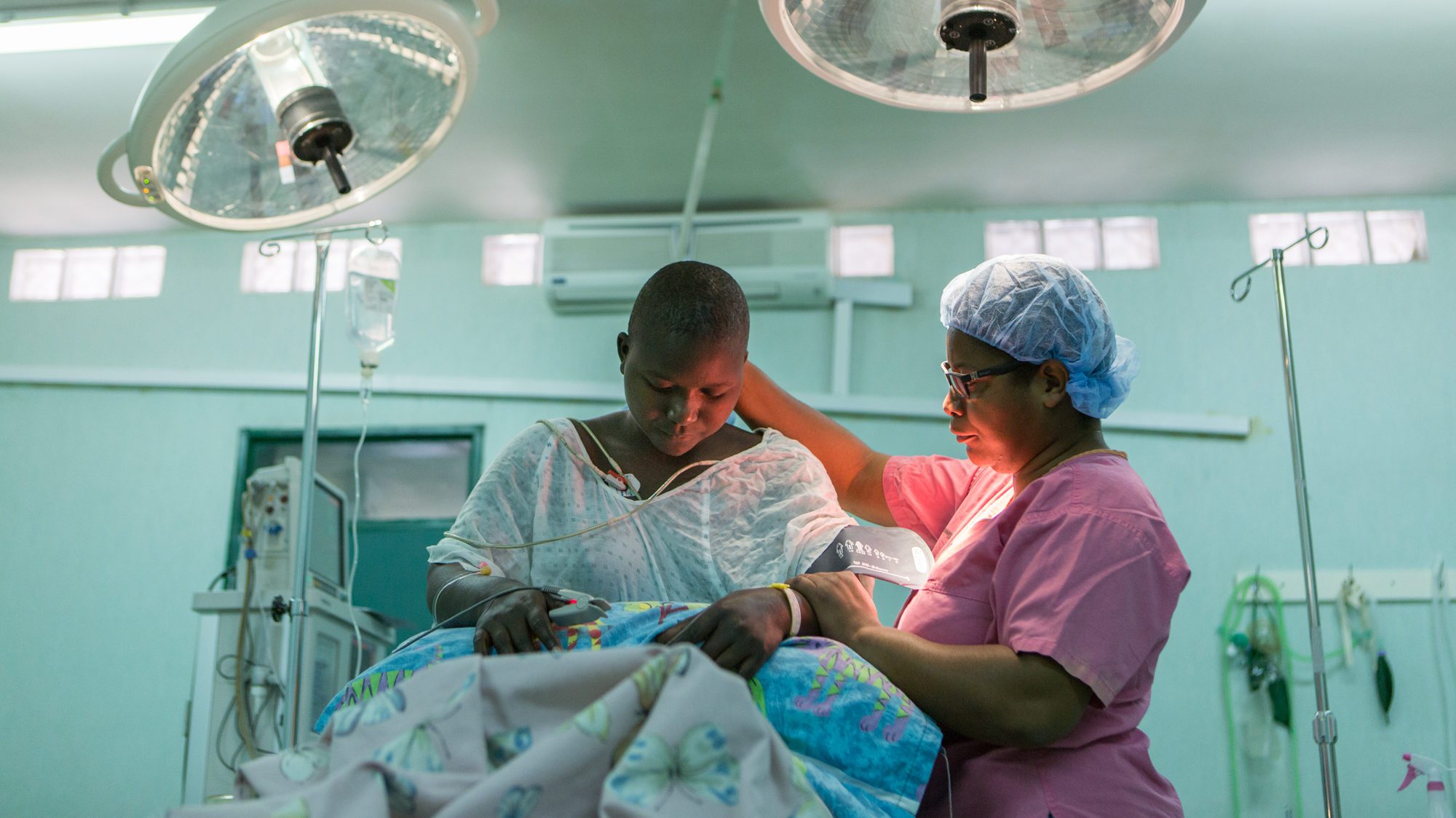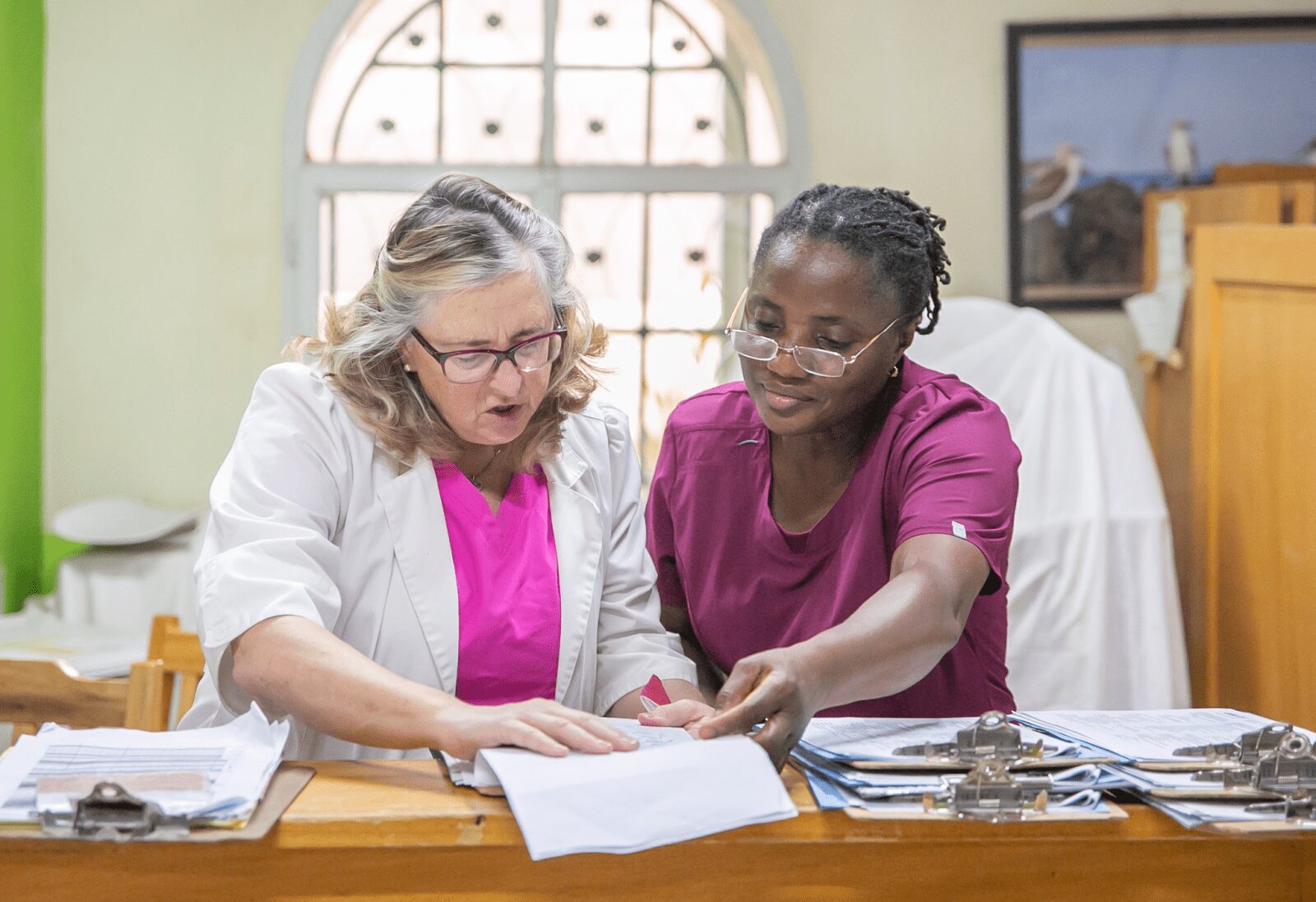
Often, the discussion around global surgery focuses on the surgeons and the important work they do. This is understandable, as there is a considerable dearth of surgeons in low- and middle-income countries (LMICs), which is one of the reasons that most of the world population lacks access to surgery. However, in our focus on surgeons, we often overlook the important role nurses play in the delivery of safe surgery and in achieving quality surgical outcomes. While there is a serious lack of surgeons in most LMICs, the same is true (although to a lesser extent) of nurses, especially nurses who are skilled and specialized in perioperative and postoperative care.
It is true that surgeons are indispensable for surgery, but so are nurses, both in the operating theatre and in the patient ward—though nurses may often work in the background, they are on the frontlines of global surgery.
While there are many risks inherent in surgery, one of the most important methods of minimizing the risk is to ensure adherence to safe standards of practice. Often compliance is an issue, and according to the Disease Control Priorities 3, Vol. 1, this is an issue that is not limited to low- and middle-income countries. There are “troubling discrepancies between what is known and taught about care standards, on the one hand, and actual practice patterns, on the other hand,” in both low- and high-income countries.1
Regarding compliance and maintaining a safe environment of care, nurses have an important role to play. They have the most interaction with patients and their families and influence everything from the sterility of the surgical environment to medicine dosages, wound care, pain management, follow-up compliance, moral support, and much more.
At CURE hospitals, nurses play a vital role. “We offer hope for the future through post-operative wound care, art therapy, and spiritual counseling. Nursing plays an essential role during the surgical reconstruction phases. The perioperative and post-operative phases of care require vigilance and evidence based nursing techniques to bring wholeness and healing. It is an essential and concomitant nursing care plan that includes training caregivers in baby and child care,” said Maureen Sloan, Nurse Consultant at CURE. “We count it a privilege and responsibility to provide these surgical interventions in order to provide our patients with a future and hope of education, renewed self-image, and normal childhood activities. Our aspiration is to provide excellent surgical care and post-operative care with an eye on the future for our patients.”
When patients come to CURE hospitals, the surgeries they receive are certainly crucial. However, it only represents a small fraction of the time they spend at the hospital. The surgeries are over relatively quickly, and most of the time patients spend at the hospital they are outside of the operating theatre. However, the risks associated with surgery continue even after they leave the OR.
According to the Disease Control Priorities 3, Vol. 1, “The two most common causes of complications within the first week of surgery are bleeding and infections.” The key to mitigating the complications and/or delayed morbidities during the postoperative recovery is “Anticipating potential complications, and either preventing them … or identifying the signs and symptoms and intervening early and aggressively.”2
Nurses are in the best position to monitor the patients during the critical period following their surgery, and maintaining a safe environment of care is their top priority. They are able to ensure the continuity of care for each patient, assessing the progress of their recovery and their level of pain. However, this can be challenging in a resource-constrained setting.

In many LMICs, the infrastructure is very poor, the supply chain unreliable, and the biomedical support for maintaining and repairing medical equipment non-existent. CURE’s Director of Nursing, Dr. Rebecca Threatt spoke about the task CURE’s nurses face in delivering quality care under difficult circumstances. She observed that CURE’s nurses strive “to provide state-of-the-art and evidence-based care with some things which may not be quite “state-of-the-art,” and keep surgical safety at its best. Long hours are needed to keep surgical safety at its best, when one autoclave might not be working, or limitations of supplies means becoming innovative to still maintain the utmost safely for their patients.”
In order to overcome these challenges and to equip nurses with the tools they need to ensure compliance with the best standards of practice, training is essential. Dr. Threatt also spoke about this, saying, “Finding continuing education for international nurses can be a bit complicated at times. How to reach across language, culture, and unstable internet can create a few challenges. Recently CURE International was able to provide continuing education to some of their nursing and medical staff through the World Continuing Education Alliance.”
This exciting partnership has been successfully piloted at the Beit CURE Hospital in Zambia—the hope is to continue to develop the program and eventually provide it as a resource to all of the hospitals across CURE’s network. This will be a wonderful addition to our existing training programs, and will help maintain and improve the quality of the care CURE provides. This training also helps to highlight the important role nurses play in achieving positive surgical outcomes and underscores once again that nurses are at the heart of healthcare.
1. Weiser, T., Gawande, A. , 2015. “Excess Surgical Mortality: Strategies for Improving Quality of Care”. In: Disease Control Priorities (third edition): Volume 1, Essential Surgery, edited by H. Debas, P. Donkor, A. Gawande, D. T. Jamison, M. Kruk, C. N. Mock. Washington, DC: World Bank. P. 290.
2. Weiser, T., Gawande, A. , 2015. “Excess Surgical Mortality: Strategies for Improving Quality of Care”. In: Disease Control Priorities (third edition): Volume 1, Essential Surgery, edited by H. Debas, P. Donkor, A. Gawande, D. T. Jamison, M. Kruk, C. N. Mock. Washington, DC: World Bank. P. 290.
About CURE International
CURE International is a Christian nonprofit organization that operates a global network of pediatric surgical hospitals, which serve one of the world’s most marginalized and vulnerable populations – children with disabilities. Patients at CURE hospitals suffer from orthopedic, neurosurgical, and maxillofacial conditions that limit their mobility/functionality and opportunities for education and employment. In addition to world-class clinical service, CURE intentionally ministers to the emotional and spiritual needs of patients in its care and invests in training programs that aim to equip the next generation of health workers and strengthen national health care systems. Since inception, CURE has conducted more than 5.3 million patient visits and 330,000 surgical procedures around the world. For more information, visit https://cure.org/.




















